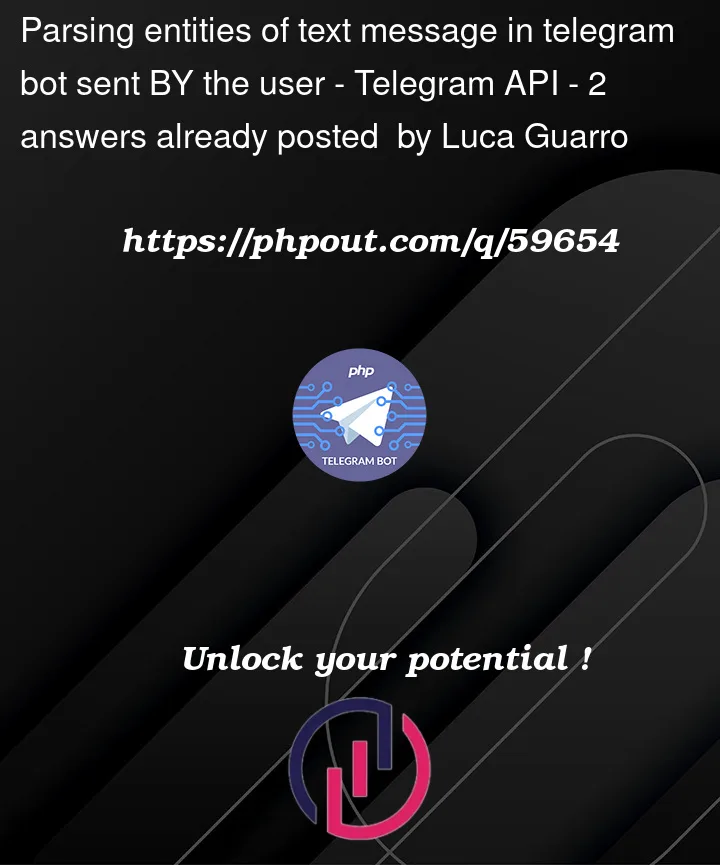I am writing a telegram bot that needs to know how the text has been stylized by the user (bold, italicized, strikethrough, spoiler, etc.). But it is not clear to me how this can be done or if it is even possible. I am using python and the python-telegram-bot package. I have figured out how to send stylized messages by having the Dispatcher parse the message being sent to the user in markdown. But how can I do the same thing receiving messages?
To make a very simple example, let’s take this bot that just has a "start" command.
def start_command(update, context):
update.message.reply_text(context.args) # reply message back to the user
def main():
defaults = Defaults(parse_mode='MarkdownV2')
updater = Updater(API_KEY, use_context=True, defaults=defaults)
dp = updater.dispatcher
dp.add_handler(CommandHandler("start", start_command))
updater.start_polling(0)
updater.idle()
How can I make it such that it knows the argument was bolded, italicized, etc. by the user?
To make it clear, I want to be able to distinguish between:
- /start hello
- /start hello
- /start hello
- …




2
Answers
Depending on your use case, there several things that you can use one of the following:
Message.entitiesis a list ofMessageEntityobjects that tell you how the text is formatted. However, since aMessageEntityonly contains info on the offset and length, it’s a bit tricky to get the text that’s formatted by the entity.Message.parse_entityandMessage.parse_entities. The first accepts one of the elements ofMessage.entitiesand returns the text covered by that entity. The second returns a dictionary, where the keys are the elements ofMessage.enitiesand the values are the corresponding return values ofMessage.parse_entity.Message.text_htmlandMessage.text_markdown_v2are convenience properties that give you the text with the corresponding markup inserted. E.g.message.reply_html(message.text_html)will send a message that’s formatted exactly likemessage.Disclaimer: I’m currently the maintainer of
python-telegram-bot.The method getUpdates used to retrieve messages sent from users allows you to gather all of the mentioned entities inside of a user message.
Per each Update object containing a Message object you could find easily the related entities like you’re trying to do.
Following the official Telegram’s Message object representation, each Message object has a field named entities which is an array of MessageEntity.
Let’s assume that I sent a text message like so:
"plain text bold text italic text"
The Update object will be structured as:
You could associate really easily per each text piece its own entity thanks to the offset, the length of this entity and its type.
In our case, we could understand that we have a 10 characters bold entity starting from the 11th characters of the entire message.